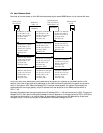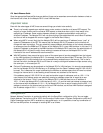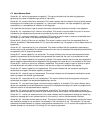F-2 User’s Reference Guide
Received Clear Ind. from DN: Received clear indication from switch. Associated parameter: called directory
number. Secondary associated parameter: cause code.
Connection Confirmed to our DN: Received connect confirmation for Connect Request sent to the switch.
Associated parameter: called directory number.
Received Connect Ind. for DN: Received connect indication for Call Request sent to the switch. Associated
parameter: called directory number.
Received Disc. Ind. from DN: Received disconnect indication from switch. Associated parameter: called
directory number. Secondary associated parameter: cause code.
Received Setup Ind. from DN: Received call indication from switch. Associated parameter: called directory
number.
Issued Setup Request from our DN: Call request was sent to switch. Associated parameter: called directory
number.
Requested Connect to our DN: Connect request for the received call was sent to the switch. Associated
parameter: called directory number.
Issued Clear Request for our DN: Clear request was sent to the switch. Associated parameter: called directory
number.
Issued Clear Response to DN: Clear response was sent to the switch. Associated parameter: called directory
number.
Disconnect Reqested: Disconnect request was sent to switch. Associated parameter: called directory number.
Secondary associated parameter: cause code.
ISDN event cause codes
These codes appear as associated (secondary) parameters in some of the ISDN events.
Cause No. 1: unallocated (unassigned number). This cause indicates that the destination requested by the
calling user cannot be reached because, although the number is in a valid format, it is not currently assigned
(allocated).
Cause No. 2: no route to specified transit network. This cause indicates that the equipment sending this
cause has received a request to route the call through a particular transit network which it does not recognize.
The equipment sending this cause does not recognize the transit network either because the transit network
does not exist or because that particular network, while it does exist, does not serve the equipment that is
sending this cause.
This cause is supported on a network-dependent basis.
Cause No. 3: no route to destination. This cause indicates that the called user cannot be reached because
the network through which the call has been routed does not serve the destination desired.
This cause is supported on a network-dependent basis.
Cause No. 6: channel unacceptable. This cause indicates that the channel used in this call is not acceptable
to the sending entity.
Cause No.7: call awarded and being delivered in an established channel. This cause indicates that the user
is receiving an incoming call, which is being connected to a channel already used by that user for similar calls
(e.g., packet-mode X.25 virtual calls).


















